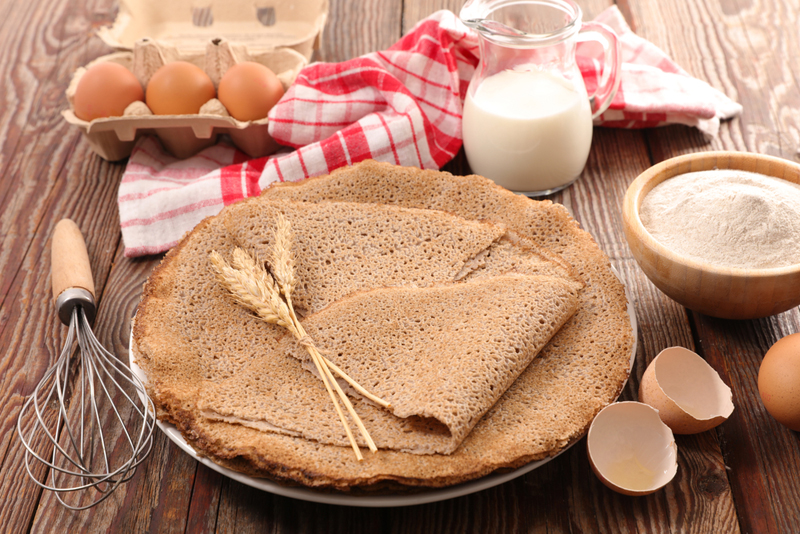

The history of pancakes and galettes is closely linked to that of buckwheat. In the 12th century, Crusader warriors travelled to Asia and were lucky enough to discover this strange and particularly tasty cereal. Accompanied by the precious seed, they returned to Europe and tried to start growing it. As buckwheat needs a lot of rain and a climate that is both mild and humid, a French region appears to be particularly suitable for this production: Brittany.
In the 16th century, Duchess Anne of Brittany adored this plant, which was also called "buckwheat" in reference to its colour, which reminded the French of the skin of the Muslim peoples, also called "sarrasin", at the time. Deciding to sow some all over her territory, she began to make the buckwheat pancake a Breton speciality.
The pancake, a sweet version of the latter, appeared many years later when at the end of the 19th century buckwheat flour, which had become too expensive, was replaced by white wheat flour. Today, this recipe is as famous and appreciated as the first one! Many other derivatives have also emerged over the years: lace pancakes, the Pont-Aven biscuit pancake and... English pancakes!
Every year, pancakes are in the spotlight in many French homes on the occasion of Candlemas Day. Celebrated in February, it traditionally commemorates the arrival of pilgrims who, welcomed in Rome, were given a baked wheat pancake. Today, this popular festival is above all an opportunity to invite friends and family to share a good time around a good pancake.
Pancakes, traditionally accompanied by ham, egg and cheese, and pancakes, to which we can add sugar, butter, jam and chocolate, are very popular dishes. At home or in a restaurant, for children or adults, this gourmet menu rarely disappoints. Proof of this is that France has a total of 4,000 crêperies!
A trip to Brittany without a visit to one of them is a real sacrilege.
The best pancake recipes according to Marmiton.
Berengère for Comme des Français
----
Let's stay in Brittany: